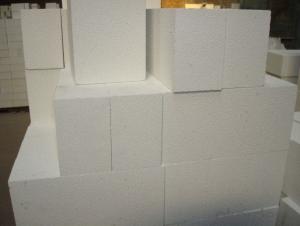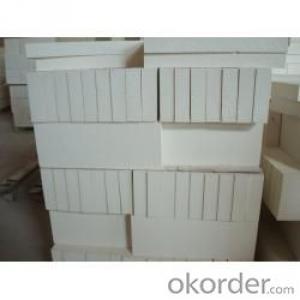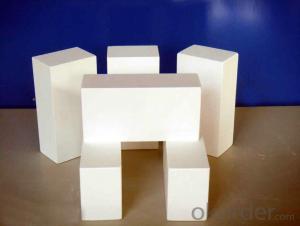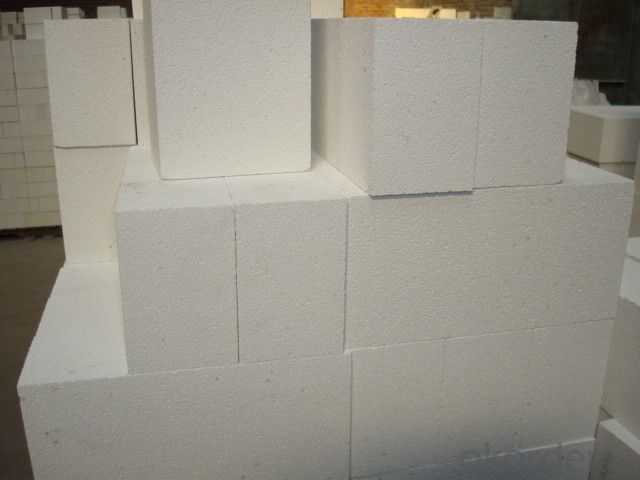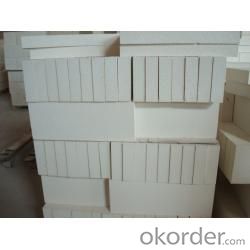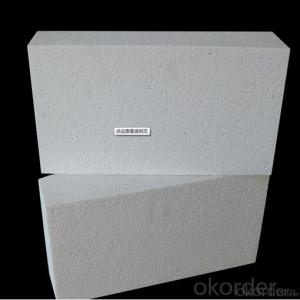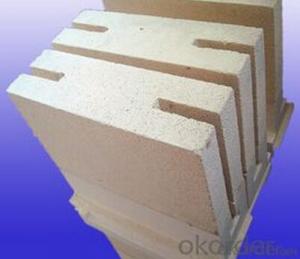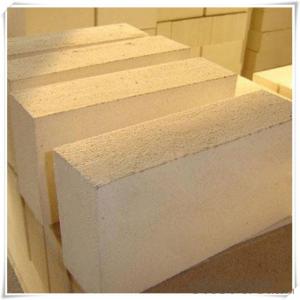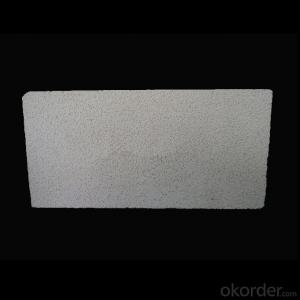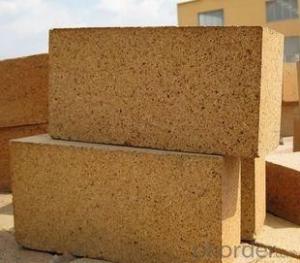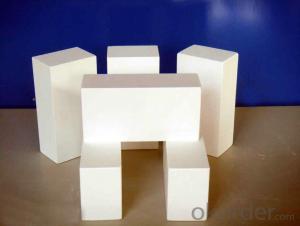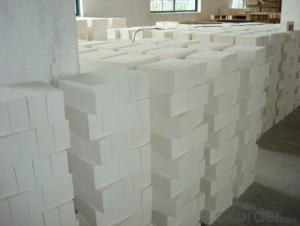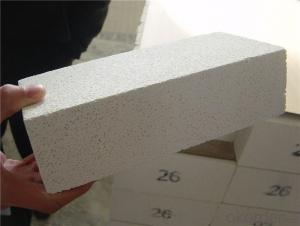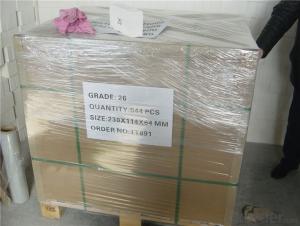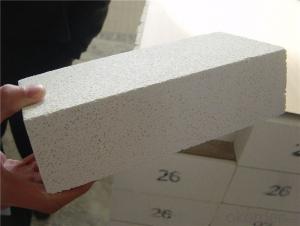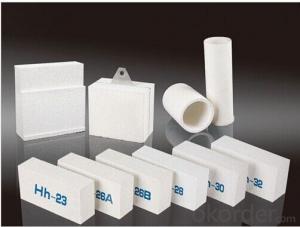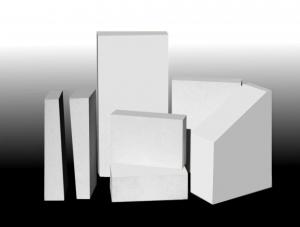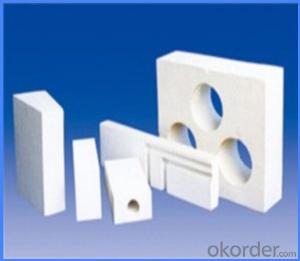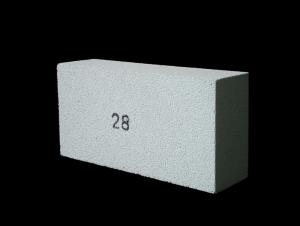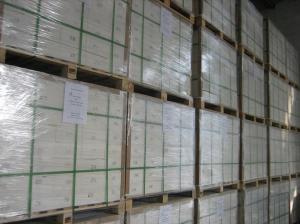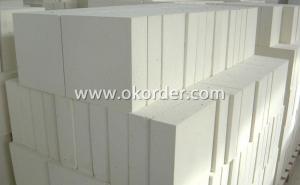Insulating Fire Brick - CCE Fire Light Dense Mullite Insulation Brick
- Loading Port:
- Shanghai
- Payment Terms:
- TT OR LC
- Min Order Qty:
- 1 m.t.
- Supply Capability:
- 10000 m.t./month
OKorder Service Pledge
OKorder Financial Service
You Might Also Like
Thermal Insulation Fire Clay Brick
Refractory brick is a refractory material used in lining furnaces, kilns, fireboxes, and fireplaces.
We provide high quality Refractory Fire Bricks that are used on wide range in the various industries like Cement, Glass and Steel. Refractory Fire Bricks are provided as per the quantity and specifications required by the customers. We provide an extensive range of Refractory Fire Bricks at reasonable prices that depend upon the quantity ordered.
Application
Insulating Fire Brick are used for the lining of converter, alternating current arc furnace, direct Current arc furnace and the ladle slag line, etc.
Company Advantage
(1)Long Insulating Fire Brick manufacture history: 25 years manufacturer
(2)Advanced equipment and good service
(3)Diversification of production standards: ISO ANSI FEPA JIS ASTM
(4)Flexible payment: T/T L/C D/P D/A
(5)Professional marketing team and after-sale service
Insulating Fire Brick main feature:
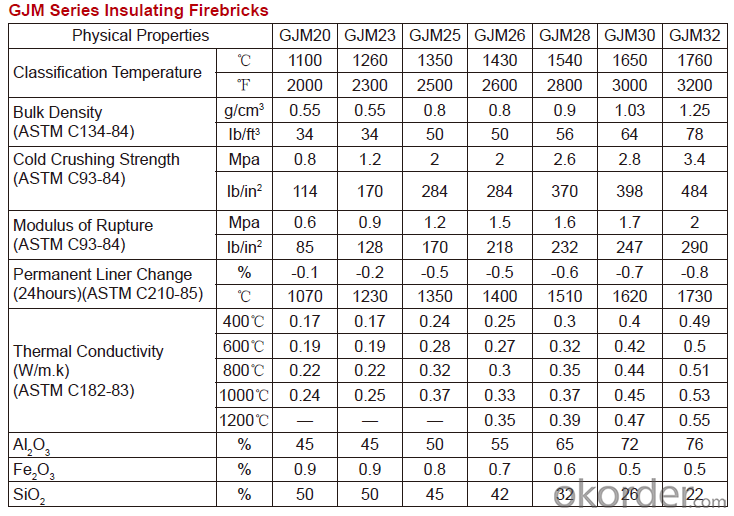
Equipment
1 unit of Ceramic Abrasive (SG Abrasive) pilot production line
2 units of Compact grain Abrasive pilot production lines
1 unit of high-end coated abrasives (abrasive cloth) production line
3 large flexible crushing and sieving lines for grit production lines
6 units of 5000KVA-10000KVA dumping type electric arc furnaces for Brown Fused Alumina fusion
FAQs
Q1 What’s the transport method?
A1 FCL delivery goods with wooden pallet or wooden case by sea; If LCL delivery, must with wooden case; Sometimes need open top, flat rack or bulk cargo.
Q2 What’s the required payment term?
A2 Generally 30% TT as the prepayment, 70% TT before delivery. If need, 100% Irrevocable Letter of Credit or negotiation.
Q3 Which country are our products exported to?
A3 Apart from entire Chinese market, the US, Russia, Japan, Korea, Australia and some Southeast Asian Nations.
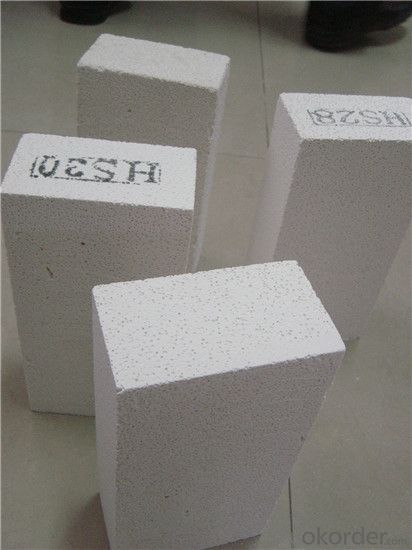
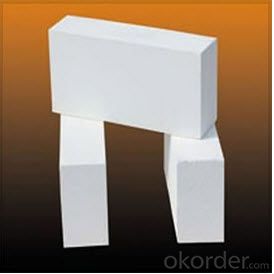
- Q: Can insulating fire bricks be used in the construction of smelting ovens?
- Yes, insulating fire bricks can be used in the construction of smelting ovens. Insulating fire bricks are designed to have low thermal conductivity, which means they are excellent at retaining heat. This property makes them ideal for applications where high temperatures need to be maintained, such as smelting ovens. Smelting ovens are used to melt and refine various metals and minerals. These processes involve extremely high temperatures, and it is crucial to minimize heat loss to ensure efficient and effective smelting. Insulating fire bricks can help achieve this goal by providing excellent insulation and reducing heat loss. Insulating fire bricks are made from lightweight materials, such as ceramic fibers or expanded clay, which have high insulating properties. They are capable of withstanding temperatures up to 3000°F (1650°C), making them suitable for the extreme heat generated in smelting ovens. Additionally, insulating fire bricks are resistant to thermal shock, meaning they can withstand rapid temperature changes without cracking or breaking. This is essential in smelting processes, which often involve heating and cooling cycles. Furthermore, insulating fire bricks are easy to work with and can be cut or shaped to fit specific dimensions or designs. This flexibility makes them highly adaptable for constructing smelting ovens of various shapes and sizes. In summary, insulating fire bricks are an excellent choice for the construction of smelting ovens due to their low thermal conductivity, high temperature resistance, thermal shock resistance, and ease of customization. They can help maintain high temperatures, reduce heat loss, and ensure efficient smelting processes.
- Q: Can insulating fire bricks be used in the construction of ceramic fiber-lined kilns?
- Yes, insulating fire bricks can be used in the construction of ceramic fiber-lined kilns. Insulating fire bricks are designed to provide excellent insulation and can help increase the energy efficiency of the kiln. By using insulating fire bricks, the kiln can reach and maintain higher temperatures while minimizing heat loss through the walls.
- Q: Are insulating fire bricks suitable for use in chimneys and fireplaces?
- Chimneys and fireplaces can benefit from the use of insulating fire bricks. These bricks are specifically designed to endure high temperatures and offer superb thermal insulation. They are crafted from lightweight materials, such as ceramic fibers or lightweight aggregates, aiding in heat retention and preventing heat loss. Consequently, they are well-suited for lining chimneys and fireplaces, as they are capable of effectively trapping and emitting heat, resulting in increased energy efficiency. Moreover, insulating fire bricks possess low thermal conductivity, enabling them to resist cracking and spalling that may occur due to sudden changes in temperature. This ensures their longevity and durability. Overall, insulating fire bricks are a dependable and efficient choice for bolstering the performance and safety of chimneys and fireplaces.
- Q: Can insulating fire bricks be used in the construction of steel production furnaces?
- Certainly, insulating fire bricks have the capability to be employed in the construction of steel production furnaces. These bricks have been specifically engineered to endure extreme temperatures and offer exceptional thermal insulation, rendering them suitable for a wide range of industrial applications, including steel production. They are manufactured using lightweight materials with low thermal conductivity, enabling them to effectively minimize heat loss and enhance energy efficiency within furnaces. Furthermore, these bricks exhibit remarkable resistance to thermal shock, a crucial property for steel production processes involving rapid heating and cooling. In summary, utilizing insulating fire bricks in the construction of steel production furnaces can optimize performance, reduce energy consumption, and enhance the overall efficiency of the steelmaking process.
- Q: What is the typical weight of an insulating fire brick?
- The typical weight of an insulating fire brick can vary depending on the specific type and manufacturer. However, on average, an insulating fire brick weighs between 2.5 to 3.5 pounds (1.1 to 1.6 kilograms). It is important to note that this weight estimation is for a standard-sized brick, typically measuring 9 x 4.5 x 2.5 inches (22.9 x 11.4 x 6.4 centimeters). Different densities and compositions of insulating fire bricks can result in slight variations in weight, so it is always advisable to refer to the manufacturer's specifications for accurate information.
- Q: Are insulating fire bricks resistant to sound transmission?
- Yes, insulating fire bricks are known to have good sound insulation properties and are resistant to sound transmission.
- Q: What is the refractoriness of insulating fire bricks?
- The refractoriness of insulating fire bricks refers to their ability to withstand high temperatures without losing their structural integrity or insulation properties.
- Q: Can insulating fire bricks be used in oil refineries?
- Yes, insulating fire bricks can be used in oil refineries. These bricks are designed to withstand high temperatures and provide excellent insulation, making them suitable for various industrial applications, including oil refineries. They help to reduce heat loss, improve energy efficiency, and protect the surrounding equipment and structures from extreme heat.
- Q: Do insulating fire bricks require any special fireproof coatings?
- No, insulating fire bricks do not require any special fireproof coatings. These bricks are designed to withstand high temperatures and provide excellent insulation properties without the need for additional coatings. They are made from special refractory materials that have high heat resistance and low thermal conductivity. Insulating fire bricks are commonly used in applications such as kilns, furnaces, fireplaces, and other high-temperature environments where insulation is required. Their inherent properties make them capable of withstanding intense heat without the need for any additional coatings or treatments.
- Q: Are insulating fire bricks resistant to acids and alkalis?
- The resistance of insulating fire bricks to acids and alkalis may vary depending on their composition and manufacturing process. Typically, these bricks are made from materials like alumina, silica, or a combination of both, which offer excellent resistance to high temperatures and thermal conductivity. Moreover, these materials are chemically inert, meaning they do not react with acids or alkalis. Nevertheless, it is important to acknowledge that certain acids and alkalis can still cause slight degradation or corrosion over time, particularly if they are highly concentrated or used at elevated temperatures. Therefore, it is advisable to refer to the manufacturer's specifications or conduct specific tests to determine the bricks' resistance level to particular acids or alkalis. In conclusion, insulating fire bricks are suitable for applications involving exposure to acids and alkalis. However, it is always recommended to consider the specific requirements and consult experts or manufacturers to ensure that the bricks will perform adequately in the intended environment.
Send your message to us
Insulating Fire Brick - CCE Fire Light Dense Mullite Insulation Brick
- Loading Port:
- Shanghai
- Payment Terms:
- TT OR LC
- Min Order Qty:
- 1 m.t.
- Supply Capability:
- 10000 m.t./month
OKorder Service Pledge
OKorder Financial Service
Similar products
Hot products
Hot Searches
Related keywords
